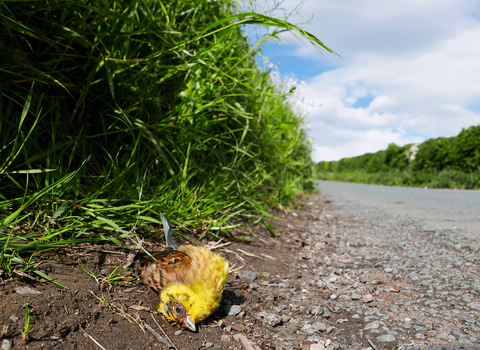On Sunday (2nd October) the Government quietly published further information on the Investment Zones which were first mentioned in the Growth Plan published on 23rd September 2022. This includes an ‘Expression of Interest Form’ and accompanying guidance.*
The Wildlife Trusts have significant concerns about the impact these Investment Zone sites will have on nature and achieving the Government’s stated ambition of protecting 30% of land for nature by 2030. For example:
These zones could see the loss of nationally and internationally protected wildlife sites. Applicants do not need to apply the mitigation hierarchy – a process that’s supposed to limit damage to wildlife from development – and they do not need to avoid development on National Parks, Areas of Outstanding Natural Beauty, Sites of Special Scientific Interest (SSSI) or equivalent, or Green Belt. They just need to say whether the proposal would be on these sites and if they would be prepared to mitigate for any environmental impact.
The lack of Natura 2000 sites – Europe’s most valuable and threatened species and habitats such as Special Protection Areas and Special Areas of Conservation – in this list confirms our fears that these designations will not be recognised in the future and all of our most important natural places may only be given SSSI level protection. This means, for example, there could be no legal requirement for mitigation and compensation of any loss or damage to the sites from development.
There will be little or no protection for nature. The guidance says key planning policies will continue to apply for green belt, to protect heritage and for flood risk, highway and other public safety matters, but there is no mention of the environment or nature. Environmental impact does not need to be assessed before a site is taken forward and there is no information on whether or how it will be assessed during the delivery plan phase. There is no consideration of Local Nature Recovery Strategies which the Government committed to in the 25 Year Plan and made a legal requirement in the Environment Act.
The process undermines local democracy. Applicants just need to demonstrate they have agreement in principle from Local Planning Authorities and that they have engaged stakeholders. But there is no guidance on which stakeholders. The speed of the process – just 12 days – may result in rushed applications without full understanding of the implications. While they must engage key stakeholders but do not have to get their agreement.
Pursuing unsustainable development on some of our most important sites for nature must not be tolerated. We cannot have a thriving economy without a thriving natural world. Nature is already in steep decline – which is why this Government has committed to protecting 30% of land and sea by 2030 – the minimum required to give nature a chance to recover. How can we achieve that if developers are given the green light to build all over our last strongholds for wildlife? We must not allow wilful devastation of our natural world.
Government should be focused on restoring and expanding wild places for nature, climate and future generations – but instead it appears intent on pursuing a legacy of destruction. The Wildlife Trusts are urging the public to defend nature by contacting their MPs.
*Those Mayoral Combined Authorities and Upper Tier Local Authorities that wish to propose potential Investment Zone Site(s) only have until Friday 14 October to do so. Applications can come from any Local Authority – not just those 38 that have already expressed an interest. It's worth noting that the Growth Plan intends for Investment Zones to be a UK-wide initiative but this Expression of interest and guidance only relates to England.


